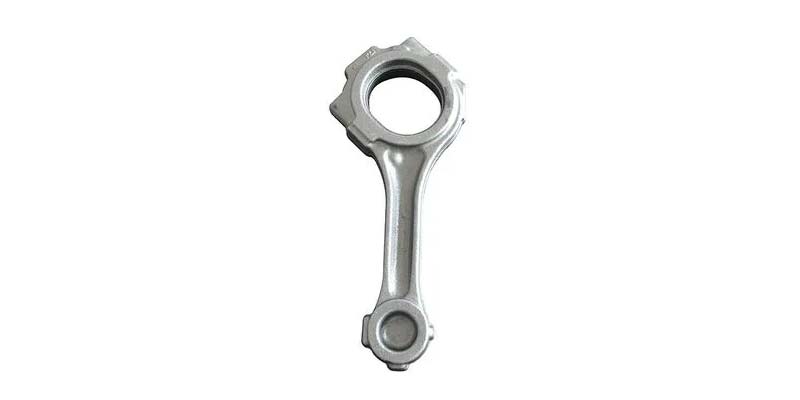- Contact Innally, Let you purchase forgings in China more favorable prices, products more assured!
- Hotline:+(86)15038323776 Email:innally@innally.com
What is connecting rod forging?
- Category: Aluminium alloy forging, Metal forging
- |
- Date: 16/11/2023
connecting rod forging is an important mechanical component, which is widely used in automotive, aviation, energy and other fields. Understanding the production process, application and performance requirements is of great significance for improving product quality and application effect.
Product Details
Connecting rod forging is an important mechanical component, which is widely used in automobile, aviation, energy and other fields. It is made of metal materials through the forging process, with high strength and stiffness, and can transmit large forces and torque.
The production process of connecting rod forging mainly includes the following steps:
Prepare raw materials: Select suitable metal materials, such as steel, aluminum alloy, etc., as raw materials for connecting rod forgings.
Heating: The raw material is heated in the heating furnace to the forging temperature, so that it has enough plasticity and ductility.
Forging: The heated raw material is put into the forging equipment for forging, so that it forms the desired shape and size.

Cooling: The forged connecting rod forging is cooled to eliminate its internal stress and stabilize its structure.
Processing: Further processing of the chilled connecting rod forgings, such as cutting, grinding, etc., to achieve the required accuracy and surface quality.
Connecting rod forgings are widely used in automobile manufacturing, mainly for connecting piston and crankshaft of automobile engine, transmitting power and bearing impact. In the process of vehicle driving, the connecting rod forging needs to bear a large force and torque, so the strength and stiffness of its requirements are high. In addition, the connecting rod forging also needs to have low weight and good wear resistance to meet the requirements of lightweight, energy saving and environmental protection.
In the production of connecting rod forgings, the choice of materials and performance requirements are also very important. Usually, connecting rod forgings are made of high-strength steel or aluminum alloy materials to give them sufficient strength and stiffness. In addition, it is also necessary to conduct strict quality control and treatment of the material to make it have better processing properties and corrosion resistance.
In short, connecting rod forging is an important mechanical component, which is widely used in automotive, aviation, energy and other fields. Understanding the production process, application and performance requirements is of great significance for improving product quality and application effect.
nannan
INNALLY mainly provides you with various types of cast and forged parts products. Welcome your inquiries! innally@innally.com
Related Products
Search
Forging center
- Steel forgings
- Aluminium alloy forging
- Titanium alloy forging
- Stainless steel forging
- Copper forging
- Automotive forgings
- Locomotive forging
- Bicycle forgings
- Motorcycle forging
- Rigging and fasteners
- Bearing forging
- Electric power fittings
- Marine forging
- Mechanical forgings for metalworking
- Mining machinery forgings
- Marine engineering forgings
- Construction machinery forgings
Popular product

© 2025. All Rights Reserved.






